
ENTOMOLOGY 2040 |

Accessory gland: A gland associated with reproductive organs of either mates or females and producing substances accompanying the sperms or eggs.
Action potential: The depolarization of a nerve cell, shown as a spike on an oscilloscope.
Active space:The zone of pheromone concentration within which a response is elicited.
Aedeagus: The sclerotized median intromittent organ of a male insect.
Aeropile: The opening in the chorion (egg shell) through which air enters, often covered by a plastron.
Alary muscles: Muscles in the dorsal diaphragm, the contractions of which induce the flow of blood into the hemocoet surrounding the heart.
Allatectomy: An operation resulting in removal of the corpora allata.
Allometric growth: A genetically determined tendency for a certain body part to grow at a more rapid rate than other parts.
Allomone: An external chemical signal that acts between different species to benefit the producer-for example, to repel a predator.
Ametabolous: Without metamorphosis; that is, changing little in form during the course of growth and molting.
Analogy: Similarity in function filling a common need but having a different evolutionary origin.
Anamorphosis: Development of an organism in which one or more body segments are added posteriorly at each molt.
Anemotaxis: Orientation with respect to currents in air.
Antibiosis: Any deleterious effect on insect survival resulting from feeding on a resistant host.
Aorta: A blood-containing tube that extends forward from the heart and is open anteriorly.
Apodeme: An invagination of the exoskeleton that serves as a point of muscle attachment.
Apolysis: Retraction of the epidermal cells from the inner surface of the endocuticle, the first step in molting.
Aposematism: Possession of vivid coloration that identifies an animal as having distasteful or unpleasant properties.
Appetitive behavior: Searching behavior of variable pattern, seeking an appropriate stimulus.
Apposition eye: A type of compound eye occurring in diurnal insects, in which each ommatidium is surrounded by a shield of pigment.
Apterygote: A wingless insect of a group believed never to have possessed wings in its past history.
Arolium: A padlike structure at the tip of the insect leg, between the claws.
Associative learning: Acquisition of the capacity to associate a stimulus with a reward or punishment.
Asynchronous flight muscles: Flight muscles in which contraction is not synchronized with the reception of nervous stimuli.
Autocidal control: The use of insects for self-destruction, chiefly by release of sterile individuals.
Autogenous: In blood-feeding insects, the ability to produce eggs without taking blood.
Axillary sclerite: A small sclerite at the wing base, articulating with the thorax.
Axon: A fiber of a nerve cell that carries nerve impulses away from the cell body.
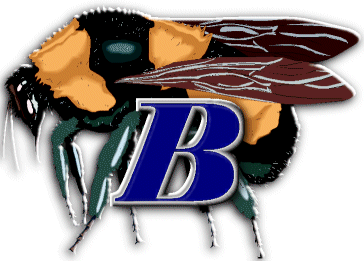
Basalare: A small sclerite in the upper part of the pleuron that articulates with the axillary sclerites.
Basement membrane: A noncellular sheath separating the epidermal cells from the hemolymph.
Batesian mimicry: Resemblance of a palatable species to one that is unpalatable or has effective defenses.
Binominal nomenclature: The system of naming organisms with two names, generic and specific.
Biological control: The employment of biotic agents, such as predators, parasitoids, and disease organisms, to control populations.
Biotic release: The sudden release of a population from its natural enemies, often resulting in a population explosion.
Biotype: A population of a species that differs genetically from another population with respect to host affiliation (also called "host race").
Bivoltine: Having two generations per year.
Blastoderm: The thin cellular layer that surrounds the yolk of an egg.
Bombykol: The sex attractant pheromone of the female silkworm moth.
Brevicomin: An aggregation pheromone of the bark beetle Dendroctonus brevicomis.
Buccal cavity: The opening enclosed by the mouthparts, leading to the true mouth and the pharynx.
Bursa copulatrix: A pouch on the median oviduct of the female that receives the aedeagus of the mate.
Bursicon: The hormone controlling tanning and expansion, produced by neurosecretory cells of the brain.
Campaniform sensillum: A sense organ consisting of a dome-shaped portion of the cuticle with associated sensory neuron; perceives stresses in the cuticle.
Cantharidin: A defense allomone of blister beetles (also known as "Spanish fly").
Cell (of the wing): A thin, membranous area surrounded by veins.
Cercus (plural, cerci): An antenna-like sensory appendage arising from the posterior end of the abdomen.
Cervix: The largely membranous neck region of an insect, between head and thorax.
Chelicera (plural, chelicerae): One of the major elements in the mouthparts of spiders and related arthropods; not jaw-like, but in the form of fangs, pincers, or piercing organs.
Chemoreceptor: A sense organ modified for the reception of chemical stimuli.
Chemotaxis: Orientation with respect to a chemical gradient.
Chitin: The tough, insoluble polysaccharide making up a major part of the insect procuticle.
Chordotonal organ: An elongate sense organ attached to the inner surface of the body wall and sensitive to stretching and to vibrations.
Circadian rhythm: An endogenous rhythm involving a response at about 24-hour intervals.
Circulatory virus: A virus that circulates within the body of an insect before being introduced into a new host.
Cleptoparasite: A "thief parasite," one that consumes the food stored by another insect in a nest.
Climatic release: Release of climatic restraints, such as a period of favorable weather or entry into a favorable region, resulting in population increase.
Clypeus: A sclerite on the front of the head, above the labrum.
Coevolution: An evolutionary change in a trait of individuals of one population in response to a trait of individuals of a second population, followed by an evolutionary response of the second population to a change in the first.
Colleterial gland: An accessory gland of the female that produces the ootheca.
Communication: The production of a signal by an individual that influences the behavior of another individual and that is mutually beneficial.
Companionate planting: The intercropping of certain repellent plants with crop plants.
Competitive exclusion principle: The concept that two species cannot long coexist if they have identical niches.
Complete metamorphosis: Striking changes between larva and adult, with an intervening pupal stage.
Coprophagous: Feeding on fecal material.
Cornicle: One of a pair of tubelike processes on the abdomen of aphids; secretes an allomone and an alarm pheromone.
Corpus allatum (plural, corpora allata): A small endocrine gland situated behind the brain, the source of juvenile hormone.
Corpus cardiacum (plural, corpora cardiaca): A small organ of nervous origin just behind the brain, associated with storage and release of PTTH and other hormones.
Corpus pedunculatum (plural, corpora pedunculata): See Mushroom body.
Coxa: The most basal segment of the insect leg, articulating with the thorax.
Crop: An expansible part of the foregut that holds food until it can be passed into the midgut.
Crypsis: Close resemblance of an animal to its physical or biotic background (also called protective coloration).
Cultural control: Modification of the environment-for example, by tillage-to make it less attractive to pests.
Cuticle: The noncellular outer portion of the integument.
Cuticutin: The tough, insoluble substance making up the outer surface of the epicuticle, containing cross-linked lipid and protein molecules.
Cytoplasmic polyhedrosis virus (CPV): A virus that develops in the cytoplasm of host cells, chiefly in the midgut.
Darwinian fitness: Differential reproduction, in terms of the number of genes an individual passes to the next generation.
Density-dependent factor: A factor that causes a level of mortality that varies with the number of individuals in the population.
Density-independent factor: A factor that causes a level of mortality that is unrelated to population density.
Deutocerebrum: The middle section of the brain, which innervates the antennae.
Diapause: A state of arrested behavior, growth, and development that occurs at one stage in the life cycle.
Direct pest: A pest insect that attacks a part of a plant that is harvested, as contrasted to an indirect pest.
Distal: Referring to the part of an appendage that is farthest from the body.
Dorsal: Referring to the upper surface (back) of an animal.
Dorsal diaphragm: A muscular sheet underlying the heart which assists in the flow of blood.
Dorsal longitudinal muscles: Muscles running longitudinally, dorsally in insect segments, in the thorax powering the downstroke of the wings of most insects.
Dorsoventral muscles: Muscles inserting on the dorsum of the thorax and originating ventrally, powering the upstroke of the wings of most insects.
Dorsum: The upper surface (back) of an animal.
Dufour's gland: An exocrine gland on the ventral, posterior part of the abdomen of female Hymenoptera, the source of pheromones serving diverse functions.
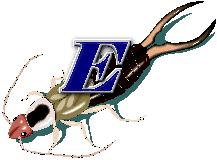
Ecdysis: Splitting and casting off of the old cuticle, the major event in molting.
Ecdysone: A molting hormone, secreted by the prothoracic glands.
Eclosion: Hatching of the egg, or emergence of the adult insect at the terminal molt.
Ecological homolog: One of two or more species having most niche parameters in common.
Economic injury level (EIL): The level of damage to a crop that is equal in value to the cost of suppressive measures.
Economic threshold (ET): The level of damage by a pest that serves to warn the agriculturalist of impending problems.
Ecosystem: A biological community considered in relation to its physical environment.
Ejaculatory duct: A median duct that carries the sperm from the internal reproductive system to the exterior.
Elytron (plural, elytra): The hardened front wing of a beetle.
Encapsulation: The enclosure of a parasitoid larva within the blood of the host by a layer of hemocytes.
Endocrine gland: A gland that discharges its products (hormones) to the inside (as contrasted to an exocrine gland).
Endocuticle: The inner zone of the procuticle, softer and lighter in color than the exocuticle.
Endogenous activity: Nervous discharges that arise spontaneously, in the absence of stimulation.
Endopterygote: An insect that develops through the immature stages as a larva with wings retained internally as imaginal discs.
Entomophagous: Feeding on insects.
Entomopox virus: A virus that multiplies in the cell cytoplasm of fat body and blood cells in a variety of insects.
Epicuticle: The outer zone of the insect cuticle, rich in lipid and protein and lacking chitin.
Epidermis: The single outer cell layer of the body, which secretes the cuticle.
Epimorphosis: A type of development in which the insect emerges from the egg with its full compliment of body segments (opposite of anamorphosis).
Equilibrium position (EP): In insect bioeconomics, the average density of a potential pest on a specific crop.
Esophagus: A tubular portion of the foregut, behind the pharynx.
Eusociality: A type of social behavior involving overlap of generations, cooperative brood care, and a caste system in which many colony members are sterile.
Exocrine gland: A gland that discharges its products to the outside (as contrasted to an endocrine gland).
Exocuticle: The outer portion of the procuticle, generally harder and darker than the inner portion (endocuticle).
Exopterygote: An insect that retains its wing pads externally through its immature stages.
Exoskeleton: A skeleton external to the remainder of the body, the muscles attaching to its inner surface.
Extrinsic: Having its origin outside the limits of an organ with which it is associated.
Farnesene: An alarm pheromone of aphids, secreted from the cornicles.
Fat body: Accumulation of large cells in the hemocoel that store metabolites and are centers of intermediary metabolism.
Femur (plural, femora): The third segment of the insect leg, beyond the trochanter and before the tibia.
Fibril: The contractile unit of a muscle cell (fiber).
Filter chamber: A modification of the gut of many Homoptera (such as aphids), permitting much water and some carbohydrates to bypass the midgut.
Filter feeder: An insect that seines particles from water by means of brushes or webs.
Fixed action pattern: A segment of behavior performed in a stereotyped, species-specific manner.
Flagellum: The outermost part of the antenna, beyond the scape and pedicel, usually divided into many subsegments (flagellomeres).
Follicle: A tubule of the testis in which sperm are produced.
Foulbrood: A bacterial disease of honey bee larvae and pupae.
Founder effect: Speciation resulting from the establishment of a small population in an entirely new area and the subsequent divergence of the resulting population from the parent stock.
Frontalin: A sex attractant pheromone of male bark beetles.
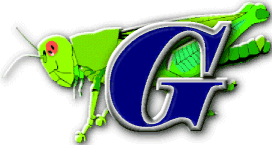
Galea: An apical lobe of the maxilla of an insect.
Gall: An abnormal growth on a plant, produced by stimulation of an insect or other organism and housing that organism.
Ganglion (plural, ganglia): A mass of nervous tissue, the basic anatomical unit of the central nervous system.
Gastric caecum (plural, cacca): A fingerlike, anterior extension of the midgut that serves a function in food absorption.
Genitalia: Structures associated with the release of sperm or eggs.
Germ band: A thickening of the blastoderm that produces the embryo.
Germarium: An area at the tip of the sperm follicles or ovarioles where sperm or egg formation is initiated.
Giant axon: A large-diameter axon of an intemeuron that traverses several body segments and conducts messages quickly.
Glial cell: A cell surrounding the axon of a neuron.
Gonopore: The external opening of the reproductive tract.
Granulosis virus (GV): A virus that multiplies in both the nucleus and cytoplasm of host cells, usually in the fat body.
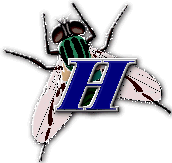
Habituation: Learning not to respond to a stimulus that provides no reward or punishment.
Hair pencils: Tufts of fine setae serving to dust pheromone-coated particles onto a member of the opposite sex.
Haltere: A modified hind wing of a fly (Diptera), acting to maintain flight stability.
Haplodiploidy: A type of parthenogenesis in which males are produced from unfertilized eggs and are therefore haptoid, while the females are diploid.
Heart: A muscular tube extending dorsally and longitudinally through the insect abdomen, continuous with the aorta, serving in circulation of blood.
Hematophagous: Feeding on blood.
Hemelytron (plural, hemelytra): The forewing of an insect that is sclerotized basally but membranous apically (literally, half an elytron; applied chiefly to Hemiptera).
Hemimetabolous: Having incomplete metamorphosis, that is, showing gradual change from molt to molt, with externally developing wing pads.
Hemocoel: The blood-filled body cavity.
Hemocytes: Blood cells.
Hemolymph: The "blood" of insects, combining functions of the lymph and blood of vertebrates (other than respiration).
Holometabolous: Having complete metamorphosis, passing through egg, larval, pupal, and adult stages.
Homeostasis: Maintenance of a functionally steady state in the body, in the colony of social insects, or in an ecosystem.
Homology: Similarity in structure resulting from having had a common evolutionary origin.
Honeydew: The liquid excretions of sucking insects (Homoptera), consisting largely of water and sugars.
Hormone: An internal chemical signal produced by an endocrine gland and carried to the tissues by the hemolymph.
Host race: A population of a species that shows a genetically determined preference for a particular host plant or animal species.
Hydrostatic skeleton: Maintenance of body form by the pressure exerted by muscles on a fluid-filled body cavity, most important in soft-bodied larvae.
Hypermetamorphosis: A type of development in which there are two or more quite distinct larval forms sequentially.
Hyperparasitoid: An insect that is a parasitoid of a parasitoid.
Hypopharynx: A tonguelike structure in the buccal cavity, associated with the labium.
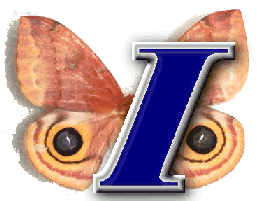
Ileum: The anterior part of the hindgut, preceding the rectum.
Imaginal disc: A group of cells set aside in the embryo and maintained through the larval stage as a center of development of adult structures.
Imago: The terminal instar, or adult.
Inclusion body: A protein crystal that encloses an insect virus.
Inclusive fitness: Net genetic representation of an individual in succeeding generations, through personal reproduction and that of individuals bearing identical genes.
Incomplete metamorphosis: Slight changes from molt to molt until wings and genitalia are fully formed in the adult.
Indirect pest: A pest insect that feeds on a part of the plant that is not marketed.
Insect growth regulator (IGR): A substance produced by a plant that mimics or antagonizes an insect hormone.
Insight learning: The ability to combine teamed behavior from diverse experiences to solve a problem.
Instar: The stage of an insect's development between molts.
Instinct: Behavior performed without previous experience and without interaction with other members of the species.
Integrated pest management (IPM): An approach to the control of pests (insects, diseases, weeds) in which all available techniques are evaluated and integrated into a unified program.
Interference competition: Competition in which individuals are prevented from feeding, mating, or laying eggs as a result of the presence of other individuals.
Interneuron: A nerve cell located within the central nervous system and serving to connect other neurons.
Intersexual selection: Natural selection involving choices between the sexes, often on the basis of courtship displays.
Intrasexual selection: Natural selection involving competition among members of one sex of a species, usually for mates.
Intrinsic: Located entirely within an organ (as contrasted to extrinsic).
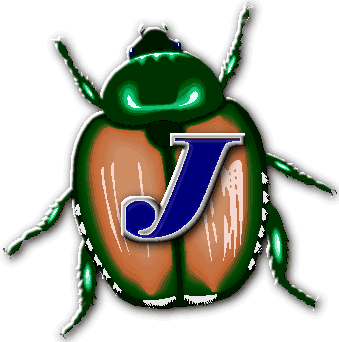
Johnston's organ: An organ in the pedicel of the antenna, consisting of a cluster of chordotonal sensilla.
Juvabione: An insect growth regulator occurring in certain trees and causing abnormal development of insects feeding on the tree.
Juvenile hormone (JH): A hormone secreted by the corpora allata that maintains juvenile features in immature insects and controls certain aspects of adult physiology and behavior.
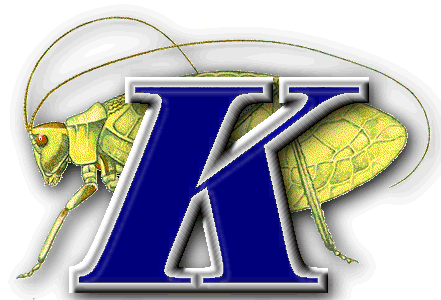
Kairomone: An interspecific chemical messenger that benefits the receiver but not the emitter.
Kinesis: An undirected movement in which the speed of movement or the frequency of turning depends on the intensity of stimulation.
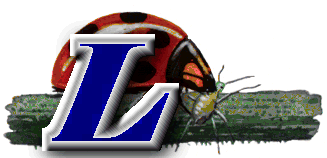
Labium: The third set of mouthparts of insects (or underlip), located behind the maxillae.
Labrum: A flaplike structure anterior to the mouthparts, below the clypeus.
Latent learning: Conditioning in which the reward occurs some time following receipt of the stimulus.
Life table: A tabulation of the life stages of an insect with a cumulative record of mortality and survival.
Light compass orientation: Orientation in which a constant angle with a light source (usually the sun) is maintained.
Malpighian tubule: An excretory tubule, opening into the gut at the junction of the midgut and hindgut.
Mandible: One of the most anterior pair of insect mouthparts, often jawlike and working from side to side.
Maxilla: One of a pair of mouthparts behind the mandibles and before the labium, bearing the maxillary palpi.
Medial (or median): Referring to the center, usually the midline, of an animal.
Meroistic ovary: An ovary possessing nurse cells that are connected to or accompany the oocytes.
Mesothorax: The middle segment of the insect thorax.
Metathorax: The most posterior of the three segments of the thorax.
Micropile: A pore in the chorion through which sperm enter.
Migration: A form of dispersal involving long-distance movements under at least partial control of the insects.
Mimicry: Presence of a pattern in a palatable species that closely resembles the pattern of an unpalatable species (= Batesian mimicry) (see also Müllerian mimicry).
Molting hormone (MH): See Ecdysone.
Monoculture: A uniform stand of one kind of crop plant.
Monophagous: Feeding on a single plant or animal species.
Miillerian mimicry: Presence of a similar aposematic pattern in unrelated, distasteful or poisonous species.
Multivoltine: Having several generations a year.
Mushroom body: A complex fiber tract in the anterior part of the brain, often suggesting the shape of a mushroom, associated primarily with the integration of sensory information.
Mycetome: A specialized internal organ that houses symbiotic microorganisms.
Mycoplasma: A pathogenic microorganism that passes through bacterial filters but has certain features in common with bacteria.
Myiasis: Infestation with the maggots of flies.
Myogenic flight muscles: Flight muscles that contract repeatedly as a result of mechanical stretch and do not require a nervous impulse for each contraction.
Myogenic rhythms: Rhythms produced by spontaneously active muscles.
Myrmecophile: A symbiont found in the colonies of ants, usually living at expense of the food in the nest.
Myrmecophyte: A plant that has special cavities in which ants live.
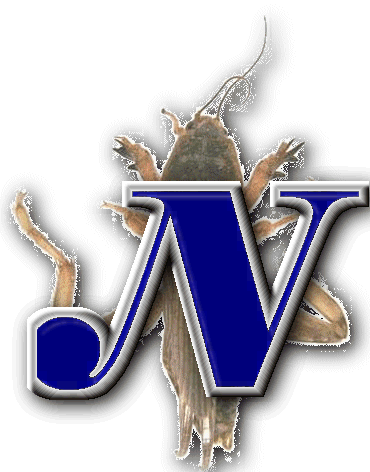
Natural control: The maintenance of a population at nonoutbreak levels by natural environmental factors, biotic and abiotic.
Necrophagous: Feeding on dead animal matter.
Nectar guide: A streak on a flower that guides insects to nectar sources.
Neopterous: Possessing the ability to fold the wings backward over the abdomen.
Neural lamella: A fibrous, noncellular layer that surrounds and supports a ganglion.
Neurogenic flight muscles: Flight muscles that contract each time a nerve impulse is received.
Neurogenic rhythms: Rhythms maintained by spontaneously active neurons.
Neurohemal organ: An organ associated with the nervous system that stores and releases hormones.
Neuron: Nerve cell.
Neuropile: The mass of closely packed nerve cell processes comprising the central part of a ganglion.
Neurosecretory cell: A cell of the nervous system that is specialized for the production and release of hormones.
Niche: The role that a species occupies in nature; that is, its precise habitat plus its behavior in that habitat.
Notum (plural, nota): A dorsal sclerite of the insect thorax.
Nuclear polyhedrosis virus (NPV): A virus that multiplies in cell nuclei, chiefly in the epidermis, fat body, and blood cells.
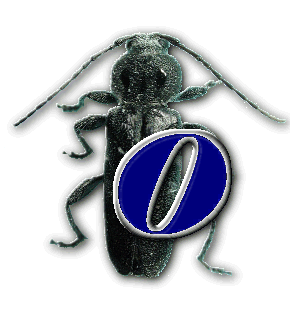
Ocellus (plural, ocelli): A simple eye on the dorsal part of the head, containing a single facet.
Oligolectic: Utilizing a very limited number of plant species as sources of pollen (said chiefly of bees).
Oligophagous: Feeding on a somewhat restricted group of (often related) plant or animal species.
Ommatidium (plural, ommatidia): A functional unit of the compound eye, expressed externally as a facet.
Ootheca: A hardened protective structure surrounding the egg mass, composed of tanned protein and secreted by accessory glands.
Osmeterium: An eversible gland on the thorax of the larvae of swallowtail butterflies that secretes allomones.
Ostia: Segmentally arranged inlet pores in the walls of the heart.
Ovariole: One of the tubules making up the ovary, in which the eggs are formed.
Ovipositor: The egg-laying apparatus of insects, typically composed of two sets of valves or a tubular extension of the abdomen.
Ovisorption: Resorption of eggs prior to time of oviposition.
Ovoviviporous: Producing small larvae, the eggs having hatched inside the mother.
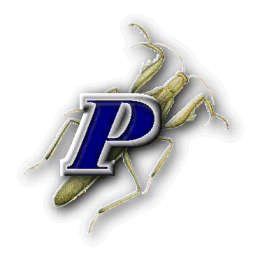
Paedogenesis: Reproduction by larviform individuals.
Pateopterous: Lacking the ability to position the wings backward over the abdomen.
Palpus (plural, palpi): A paired, segmented appendage arising on the maxilia or labium and serving sensory functions associated with food ingestion.
Panoistic ovary: An ovary in which the ovarioles lack nurse cells.
Parasite: An animal that completes its development on or in another animal but does not normally kill it.
Parasitoid: An insect that lives in its immature stages in or on another insect, which it kills after completing its own feeding.
Parental investment: Behavior of a parent that increases the probability of offspring survival at the cost of the parent's ability to produce more offspring.
Parthenogenesis: Production of young from unfertilized eggs.
Pectinate: Comblike; that is, having a series of slender projections from an elongate shaft.
Pedicel: The second, usually small, segment of the antenna.
Pericardial sinus: A space around the heart, limited below by the dorsal diaphragm.
Perineurium: The layer of cells surrounding a ganglion, which secretes the neural lamelia.
Peritrophic membrane: The delicate, tubular sheath that surrounds the food within the midgut.
Phagostimulant: A natural plant substance that induces feeding by an insect.
Pharate stage: A stage in which molting has occurred but the insect has not cast off the old cuticle.
Pharynx: A muscular portion of the foregut, just behind the mouth.
Phenological asynchrony: Lack of synchrony between the life cycle of a pest and the appropriate stage of its host plant.
Pheromone: An external chemical messenger that passes between individuals of the same species and controls intraspecific interactions.
Phoresy: A condition in which an individual is carried about by another individual without harming that individual.
Phylogeny: The study of the history of lines of evolution.
Physical gill: A bubble or packet of air that adheres to the body of an aquatic insect and is continuous with the tracheal air space.
Phytoecdysone: A plant product that mimics ecdysone.
Phytotoxemia: A disease-like plant condition produced by the injection of toxic substances by insects.
Plastron: A framework of stiff, water-repellent hairs or cuticular structures on the bodies of aquatic insects, containing a film of air into which oxygen diffuses from the water.
Pleural suture: A vertical or oblique suture marking an internal ridge of the thoracic pleuron, running from the dorsal coxal articulation to the pleural wing process.
Pleural wing process: A fulcrum for the wing base, formed at the top of the internal ridge formed by the pleural suture.
Pleuron (plural, pleura): A lateral sclerite of the thorax.
Podite: A segment of an arthropod leg, moved by muscles inserted in its base.
Polyculture: A mixed stand of crop plants.
Polyembryony: Division of a single egg to form several identical embryos.
Polyethism: The presence of several discrete types of behavior by different groups of individuals in colonies of social insects.
Polylectic: Utilizing a variety of plant species as sources of pollen.
Polymorphism: The presence of two or more distinct, structurally different types of individuals within the same stage of one species.
Polyphagous: Feeding on a broad array of plant or animal species.
Population dynamics: The forces that control population size, and their effects.
Population regulation: The maintenance of an approximately constant population size and density, and the forces that control it.
Population resilience: The capacity of a population to adapt to change or to persist in a changing environment.
Population stability: The ability of a population to absorb disturbance and to return to an equilibrium state.
Precocene: An insect growth regulator produced by certain plants that depresses the source of juvenile hormone.
Preimaginal conditioning: Conditioning of an immature insect that persists into the adult stage.
Prepupa: A resting stage of the last larval instar, prior to the rnolt to the pupal stage.
Pretarsus: The most distal segment of the insect leg, bearing the claws and arolium.
Primary defense: A defense mechanism that is continuously present, such as crypsis.
Primer pheromone: A pheromone that acts to modify the physiological state of an animal.
Proctodeum: The hindgut of insects.
Procuticle: The inner zone of the insect cuticle, containing chitin and protein, divisible into exocuticle and endocuticle.
Progressive provisioning: The supplying of food to the offspring over time, as the offspring grow.
Proleg: A fleshy, unjointed "false leg," occurring ventrally on the abdomen of caterpillars and other larval insects.
Pronotum: The dorsal, often shieldlike sclerite of the prothorax.
Proprioreceptor: A sense organ that detects the relative position of parts of an animal's own body.
Protelean parasite: An entomophagous insect that attacks its prey only when the attacking insect is immature, the adult being free living.
Protharacic glands: Endocrine organs located in the prothorax of immature insects, secreting molting hormone.
Prothoracicotropic hormone (PTTH): A hormone secreted by neurosecretory cells of the brain and serving to activate the prothoracic glands.
Prothorax: The most anterior of the three segments of the thorax.
Protocerebrum: The largest and most anterior part of the brain, which includes the optic lobes.
Proventriculus: The portion of the foregut, just before the midgut, that controls entry of food into the midgut; often lined with sclerotized teeth that grind the food.
Proximal: Referring to the part of an appendage that is closest to the body.
Pterygote: A winged insect, or a wingless insect believed to have been derived from winged ancestors.
Pupariation: Formation of the puparium by larvae of Diptera.
Puparium: A case formed of the hardened last larval cuticle, serving as a protection for the pupa.
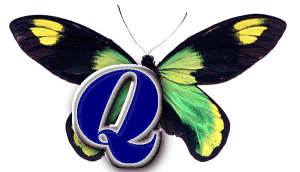
Qualitative defenses of plants: Toxins and small-molecular-weight compounds (such as alkaloids) that are active against the physiological systems of phytophagous insects.
Quantitative defenses of plants: Complex, digestibility-reducing substances (such as tannins) that reduce the ability of insects to feed on plants.
Queen substance: A pheromone produced by the queen honeybee and serving various functions in the hive as well as during mating and swarming flights.
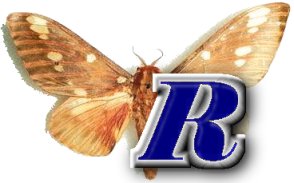
Reaction chain: A continuous series of behavioral acts, each of which is dependent on completion of the preceding act.
Rectal pad: A portion of the rectum containing enlarged cells, responsible for active water and ion uptake from the contents of the rectum.
Regulatory control: The use of enforceable regulations to prevent the spread of a pest or to suppress or eradicate it.
Releaser: An environmental or communicative stimulus that triggers a fixed action pattern.
Releaser pheromone: A pheromone that acts via the central nervous system to produce a quick behavioral response.
Releasing mechanism: An innate capacity to respond in a particular way to a specific stimulus.
Resilin: A rubberlike, proteinaceous constituent of the insect procuticle.
Resting potential: The slight charge that can be measured in an unstimulated nerve cell.
Retinula cell: A monopolar sensory neuron within an ommatidium of the compound eye.
Rhabdom: The central, rodlike element in an omtnatidium, consisting of several rhabdometes, one from each retinula cell.
Round dance: A form of recruitment in the honeybee, used when a food source close to the hive is communicated to other bees.
Royal jelly: A nutritive substance produced by glands in the heads of worker honey bees and fed to the larvae. Larvae fed this diet throughout development produce queens.
r-strategist: A species characterized by having rapid development, high motility, and a high reproductive rate relative to a K-strategist.
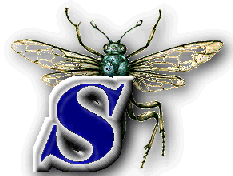
Saprophagous: Feeding on dead organic matter.
Scape: The most basal segment of the antenna.
Sclerite: A more or less rigid cuticular plate.
Sclerotin: Cuticular protein that has been hardened and darkened through cross-linkage of the molecules.
Scolopidium: A sensillum located beneath the cuticle and modified for the reception of vibrations.
Scramble competition: Competition in which many individuals "scramble" for a limited resource, such as food.
Secondary defense: A defensive mechanism that is brought into play only in the presence of a threat-for example, an aggressive display.
Secondary pest: An insect that does not normally attain pest status except when insecticides destroy its natural enemies.
Secondary plant substance: A substance produced by a plant that plays no role in the basic metabolism of the plant.
Seminal vesicle: An expansion of the vas deferens of the mate in which sperm are stored.
Sensillum (plural, sensilla): An integumental sense organ, consisting of sensory neurons and associated cuticular structures.
Sensory filtering: The process of receiving only certain specific stimuli among the many potential stimuli impinging on the body.
Serial homology: Homology within an insect due to the repetition of components of an organ system in each body segment.
Seta (plural, setae): A movable hair of the integument, typically forming a sensillum.
Sibling species: Closely related species that are difficult to distinguish by ordinary means.
Sign stimulus: A stimulus for which an animal has evolved a specific response pattern.
Social parasite: An insect that invades or lays its eggs in the nest of another insect and develops on food in the nest.
Sperm precedence: In multiple matings, the tendency for sperm from the most recent mating to fertilize the eggs.
Spermatheca: A small sac associated with the median oviduct of the female, in which sperm are stored following copulation.
Spermatocyte: A cell that divides to form the spermatozoa of male animals.
Spermatophore: A sac produced by accessory glands of male insects and transferred to the female reproductive tract, containing sperm and often proteinaceous material.
Spiracle: An external opening of the tracheal system.
Squama (plural, squamae): A membranous lobe at the extreme base of the wing of Diptera; also called calypter.
Stemmata: Simple eyes located on the sides of the head of many insect larvae.
Sternum (plural, sterna): A ventral sclerite of the insect thorax or abdomen.
Stimulus filtering: See Sensory filtering.
Stomodeal nervous system: A set of small ganglia and their connections, lying on the surface of the foregut.
Stomodeum: The foregut of insects.
Stylet: A thin, sclerotized lance formed of modified mouthparts, capable of piercing a plant or animal.
Stylopized: Infected by stylopoid beetles.
Stylus (plural, styli): A ventral, unsegmented appendage on the abdomen of bristietails.
Subalare: A small sclerite in the upper part of the pleuron that articulates with the axillary scierites.
Subcuticular space: The narrow space between the endocuticle and the epidermal cells, formed during molting.
Subesophageal ganglion: A composite ganglion that innervates the mouthparts, located in the head below the digestive tract.
Subgenual organ: An organ on the tibia of many insects, consisting of a group of scolopidia and sensitive to vibrations transmitted through the legs.
Superficial cleavage: A type of embryonic development in which the cleavage nuclei migrate to the surface of the egg; cell membranes then form about each nucleus.
Supernormal stimulus: A stimulus that exceeds normal with respect to size or other properties and elicits an exaggerated response.
Superparasitoid: A parasitoid that produces several offspring per individual host.
Superposition eye: A type of compound eye occurring in nocturnal insects, in which the ommatidia are not surrounded by a shield of pigment.
Suture: A line of indentation in the cuticle, usually forming an internal strengthening ridge.
Symbiont: An organism living in intimate association with another organism.
Sympatric speciation: Division of a species into two or more descendant species within the same area.
Synapsis (plural, synapses): The point of interaction between adjacent neurons or between a neuron and a muscle or gland, involving a chemical neurotransmitter.
Synergist: A substance that enhances the effectiveness of a second substance.
Systemic insecticide: An insecticide that is absorbed by a plant or animal and transported throughout it.
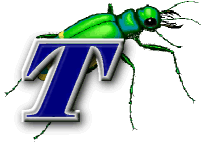
Taenidia: Cuticular ridges that support the walls of tracheae.
Tagma (plural, tagmata): A cluster of associated body segments.
Tandem running: A form of recruitment behavior in which one individual follows another, maintaining antennae contact.
Tapetum: A basal layer of tracheae in an ommatidium that reflects light.
Tarsus (plural, tarsi): The segment of the insect leg distal to the tibia, usually subdivided into tarsomeres and bearing the pretarsus with its claws.
Taxis (plural, taxes): A stereotyped orientation movement directed toward or away from a source of stimulation.
Taxonomy: The practice of classifying organisms.
Tegmen (plural, tegmina): A somewhat thickened forewing, serving as a protective covering of the hindwing, as in grasshoppers and cockroaches.
Tegula (plural, tegulae): A small, sclerotized flap overlying the base of the forewing of certain insects.
Temporal memory: The ability to compensate for the passage of time during locomotory behavior such as foraging from the nest.
Tentorium: A set of apodemes that form the internal bracing of the head.
Tergum (plural, terga) (also called tergite): A dorsal sclerite of the insect body.
Termitophile: A symbiont living in the nest of termites.
Territoriality: Occupation of a site that is defended from other individuals of the same sex and species.
Testicular follicles: Tubules in which the sperm are formed.
Thecogen cell: A cell that surrounds the glial cell and the outer section of a sensory neuron.
Thorax: The central tagma of an insect's body, bearing the legs and (when present) the wings.
Tibia (plural, tibiae): The fourth segment of the insect leg, beyond the femur and before the tarsus.
Tormogen cell: An epidermal cell secreting a ring of cuticle that connects a cuticular hair to the cuticle.
Toxicogenic: Producing disease symptoms as a result of an introduced toxin.
Trachea (plural, tracheae): A cuticle-lined air conducting tube of the insect body.
Tracheal gill: A heavily tracheated extension of the body, permitting extraction of oxygen from water.
Tracheole: A delicate tubule extending from a trachea, the site of gas exchange between the tracheal system and the tissues.
Trap crop: A crop planted because of its attractiveness to certain pests and then destroyed or treated so as to destroy the insects.
Trichogen cell: An epidermal cell that secretes a cuticular process, such as a hair.
Trichoid sensillum: A seta modified for reception of stimuli.
Trichome: A hairlike outgrowth of a plant that may serve various functions, including defense against insect attack.
Tritocerebrum: The most posterior part of the brain, which connects to the ventral nerve cord.
Trivial movements: Movements of an animal within its normal habitat, not involving dispersal.
Trochanter: The second segment of the insect leg, between the coxa and femur.
Trophogenic polymorphism: Polymorphism resulting from differences in the quantity or quality of food provided to the larvae.
Tympaniun: The eardrum-like structure of certain insects, consisting of a thin portion of integument and associated scolopidia that perceive sound.
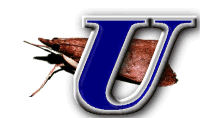
Univoltine: Having but a single generation a year.
Valvifer: A basal sclerite of a valve of the ovipositor, articulating with the tergum.
Vannus: A fan-shaped lobe at the posterior margin of the hindwing of certain insects.
Vector: An organism that transmits a pathogen from one host to another.
Vein (of a wing): A sclerotized rod supporting the wing membrane (collectively called the venation of a wing).
Venter: The lower or under surface of an organism.
Ventral: Referring to the lower surface of an organism.
Ventral diaphragm: A ventral muscular sheath that assists in circulating the hemolymph around the nerve cord.
Verbenone: An inhibitory pheromone produced by bark beetles of both sexes, inhibiting arrival of further individuals.
Visceral nervous system: A series of nerve fibers and ganglia closely associated with the gut and reproductive organs.
Vitellogenesis: Yolk formation in the developing egg.
Vitellogenins: Female-specific proteins synthesized by the fat body and taken up by maturing oocytes.
Viviparous: Producing living young that have been nourished internally by the mother.
Waggle dance: A form of recruitment in the honeybee in which direction and distance to a food source are indicated.
 |
 |
Zoophagous: Feeding on living animals.
| Return to Table of Contents |